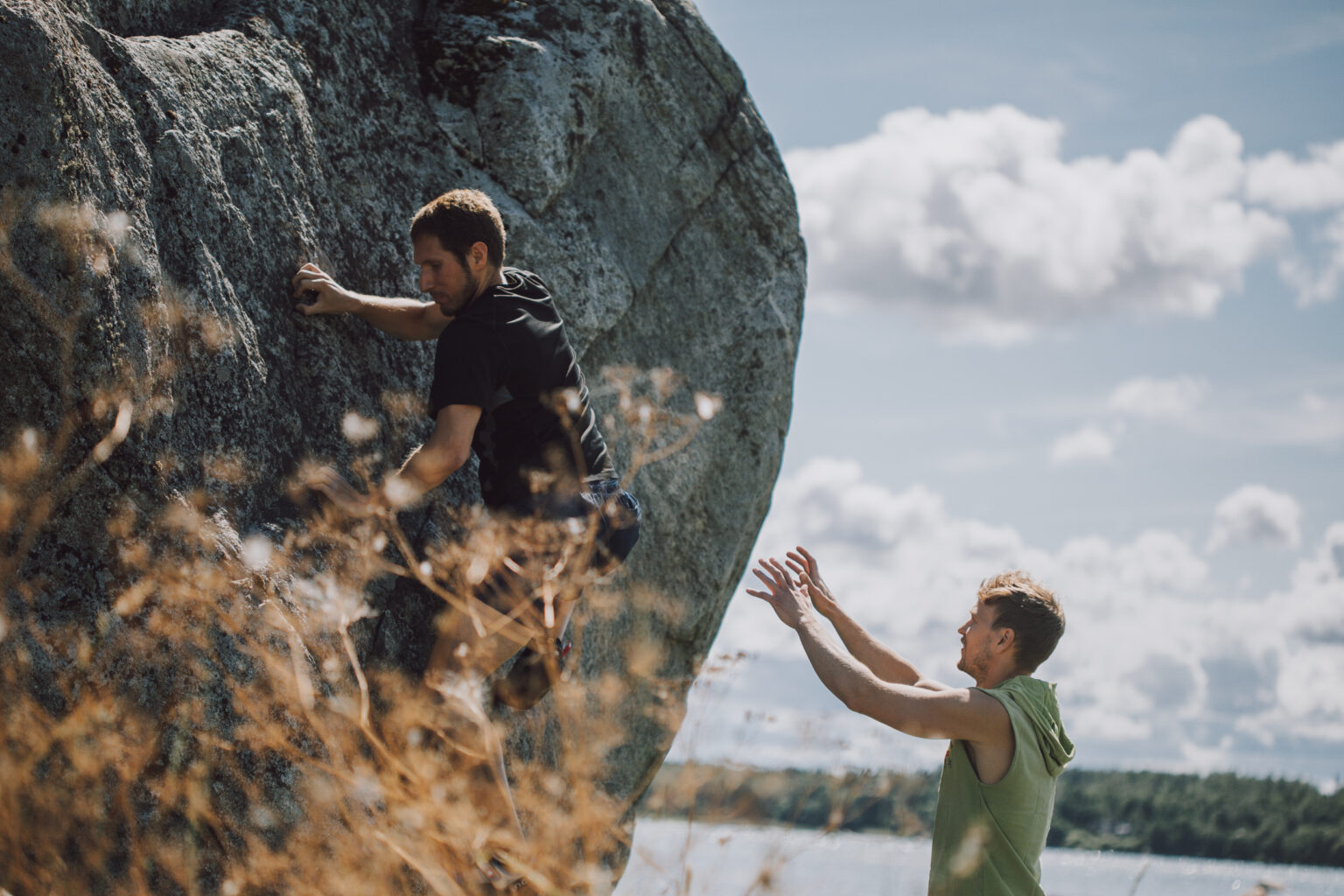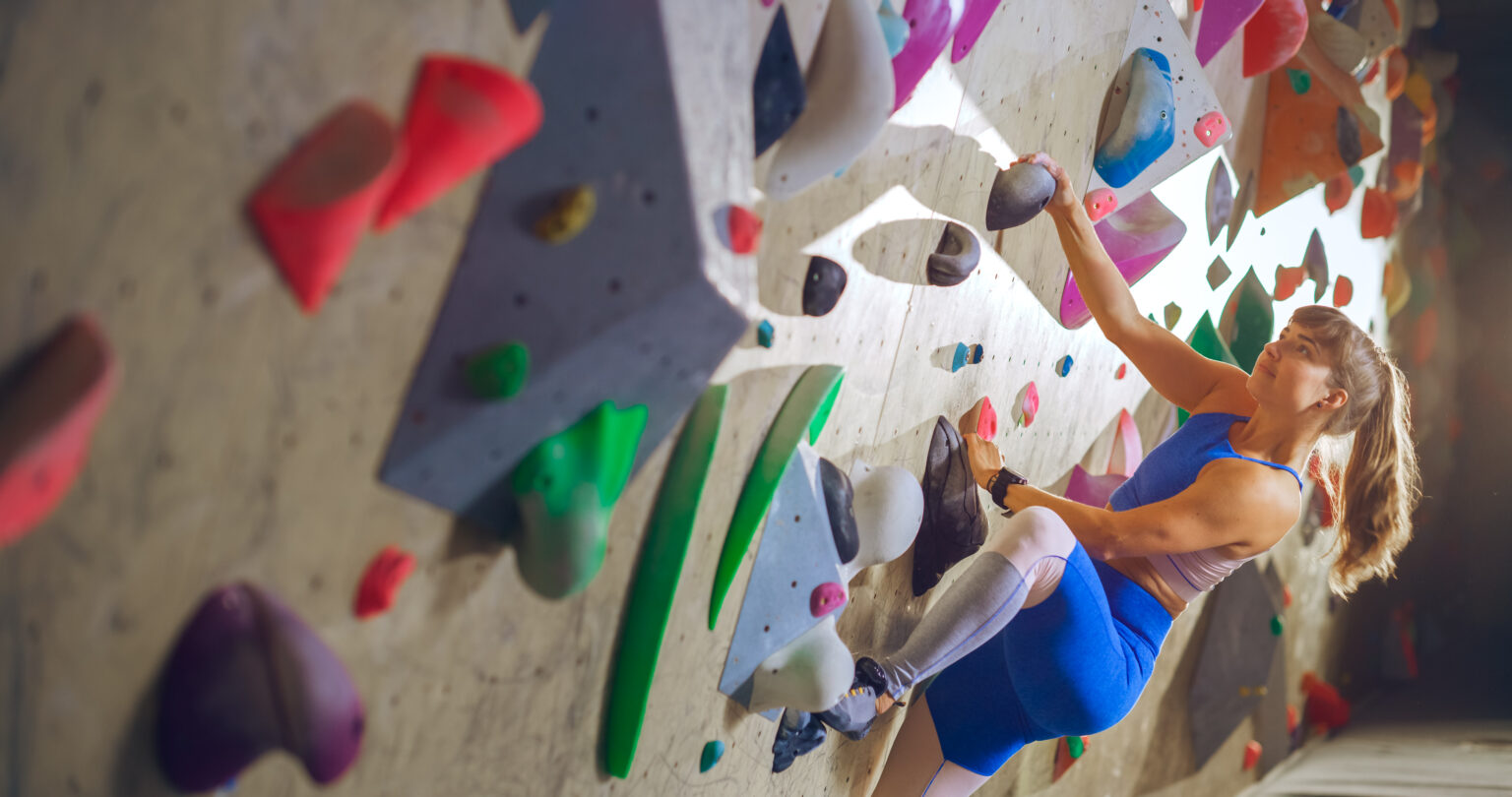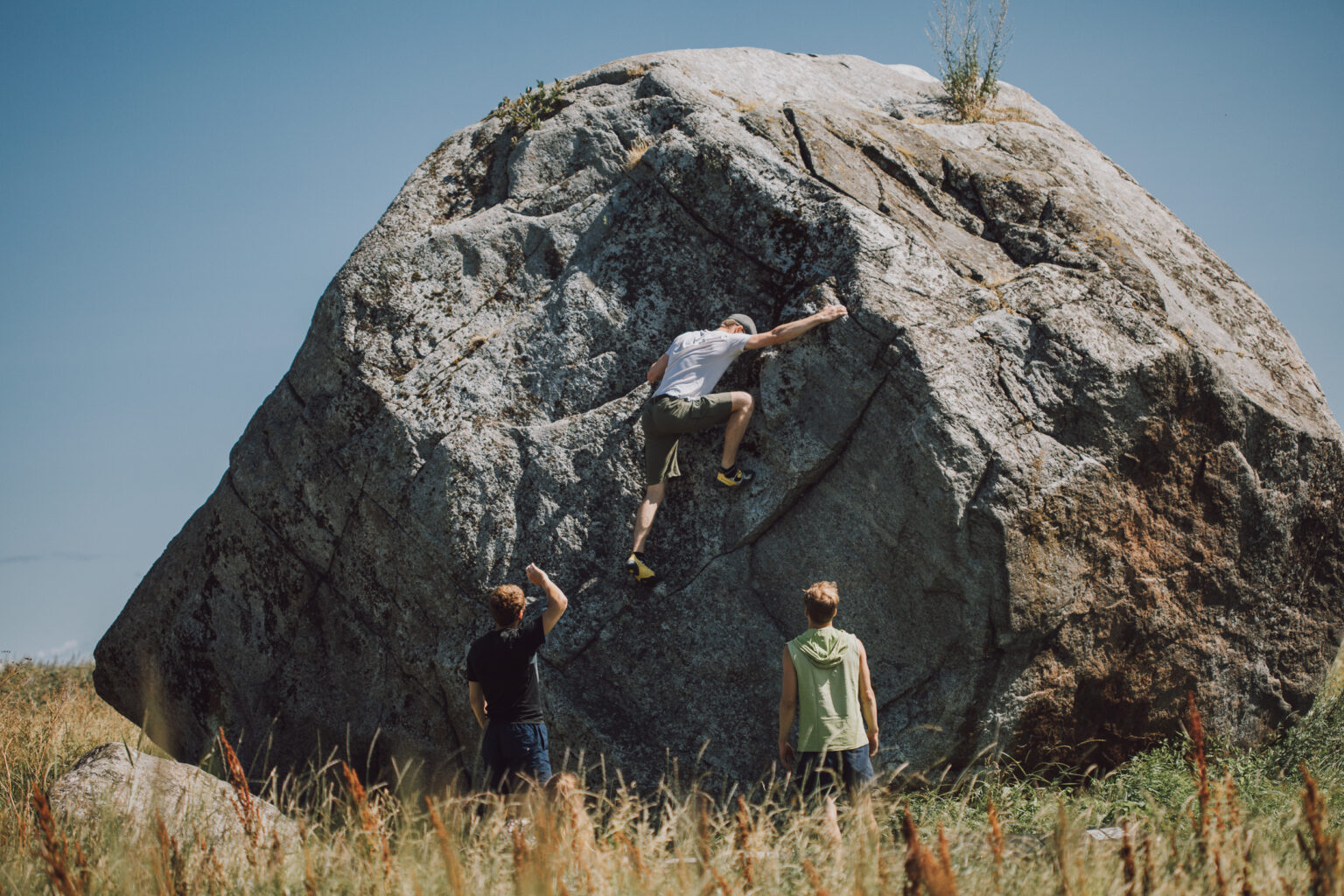
Climbing outdoors and indoors
Climbing can take place on natural rocks as well as at the gym. The climbing walls were built by climbers to be able to train even when the weather did not allow it on natural rocks or when the rocks were too far away. As a training environment, the advantage of indoor climbing walls is their versatility. Climbing holds can be moved freely and this creates an unlimited number of different climbing paths.
Although in the beginning indoor climbing was only a means of training for outdoors, today indoor climbing has become a widespread sport in which competitions are also held. From 2020. Climbing is also officially part of the Olympic Games.
At low height (up to 4.5 m), one usually climbs without rope and with foam mats providing safety. This climbing style is called bouldering and it can be done at Ronimisministeerium.
Climbing is a versatile sport
On the wall the climber is challenged by routes of varying complexity and character requiring strength, endurance, flexibility, balance – often all at once. And most importantly, it all happens in a playful way.
In addition to physical ability mental aspectis also very important. Every climbing route is a puzzle, and solving it requires problem-solving skills. In this sense, rock climbing can be compared to a game of chess. It’s easy to see how the pieces move on the board, but as long as the climber cannot see a few moves ahead, you’ll be stuck at a beginner’s level.
In addition to the physical and mental benefits, the social aspect of climbing is also important. When climbing, one not only meets friends who share the passion, but also creates a working partnership that is different from many sports where the other person is simply a co-player or an opponent. In rock climbing, the partners share their commitment and responsibility to each other and try to solve the challenge presented by the rock together. Joint efforts, successes and failures create a bond that can last a lifetime.


Estonian boulders
There are over a hundred boulders in Estonia, about a dozen of which are also very suitable for active climbers. Most of the boulders to be climbed are at least partially mapped and information about them can be found 27crags.com and some from this page and this map .
For safe trips to natural rocks, we rent portable cushioning mats (also known as crash pads) on site at the Ronimisministeerium (rent 9 € / day). Remember that Estonian boulders are mostly under nature protection, and although climbing is allowed, it requires the utmost respect. Let’s not leave a trace.
It is important for Ronimisministeerium instructors to keep in touch with climbing natural rocks. Every year we organize trips to many parts of the world. If you want to discover climbing on natural rocks for yourself, Ronimisministeerium offers you a window into this world!


